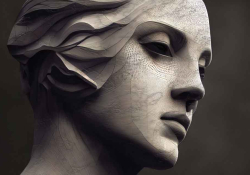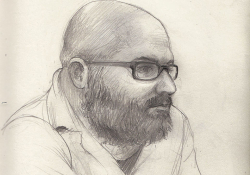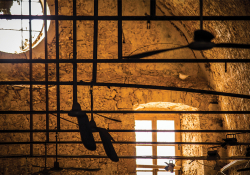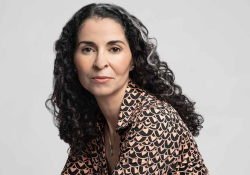Playing Hopscotch in the Gaps of History: A Conversation with Eleni Kefala
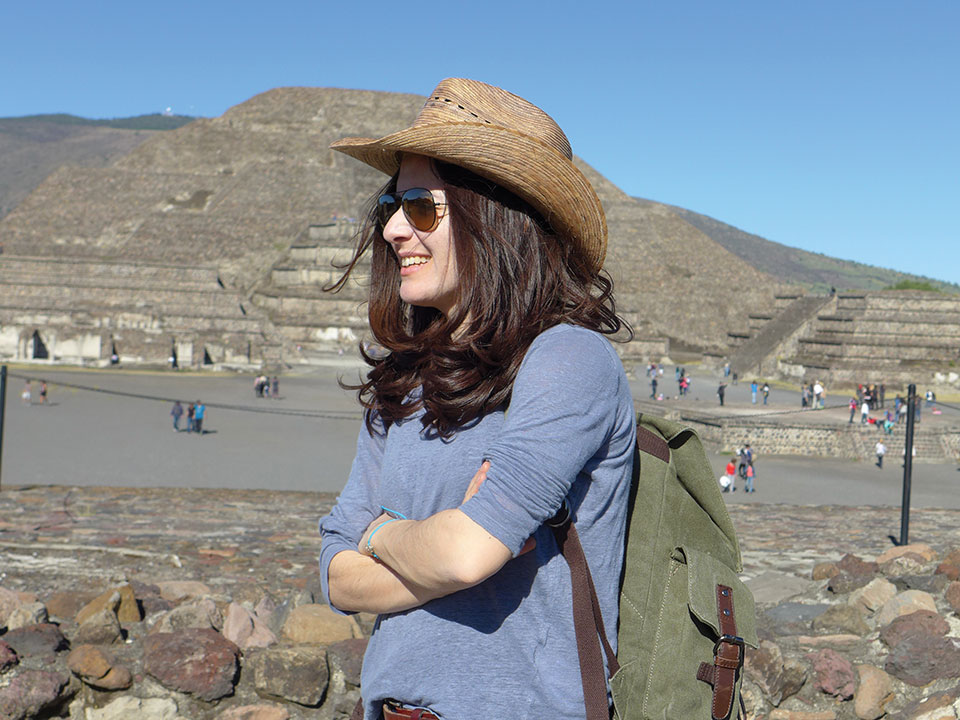
For more, read a poem by Eleni Kefala
Eleni Kefala has published two volumes of poetry, Mními kai parallayés (2007; Memory and variations), which was shortlisted for the prestigious Diavázo literary prize in Greece (first-time author category), and Chronorraphía (2013; Time-stitchings), which received the State Prize for Poetry in Cyprus. Her poems have been translated into Italian, French, Turkish, and Bulgarian. She has studied in Cyprus and Cambridge and has held positions at the University of Pennsylvania, Harvard University, and the University of St Andrews, where she is currently an associate professor of Latin American literature.
Adam Goldwyn: In your second volume of poetry, Chronorraphía (Time-stitchings), you define poetry as “the redistribution of silence / in language,” elsewhere as “an open door,” elsewhere still as “not consolation, not a song of joy or distress,” and once you simply say, “poetry is.” Poetry is an elusive concept; what does it mean to try to define it in these ways?
Eleni Kefala: Poetry is an elusive concept and yet it is everywhere. We come across it in our dreams and nightmares, in the ordinary and extraordinary moments of our life. A poem, of course, could be consolation and a song of joy or distress, but it can’t be reduced to any of these functions. And herein lies the paradox: like Alain de Lille’s god and Pascal’s nature, poetry is a sphere whose center is everywhere and whose circumference is nowhere. That’s why it is an open door—a phrase I borrow from a poem by Yóryis Pavlópoulos—because it is ubiquitous.
Besides, poetry is in an ontological sense and is made as much of language as it is of silence. We know that poetry expands language through metaphor and silence. Each word and image carries us over to different temporal, spatial, and semantic planes. We also know that poetic language weighs more than other forms of verbal expression because it is figurative and loaded with multiple meanings.
No doubt silence also plays a role in this. It creeps into the space between metaphors, lines, and stanzas, slowing down language while heightening meaning. Silence is poetry’s oxygen. A poem thrives on the unsaid, the implicit and inarticulate; it hinges on silence and its reverberations, and therefore it is important to know where to stop more than where to start. So, yes, poetry is the redistribution of silence / in language. Our attempts to define it, however futile, are necessary. We’ll never stop contemplating poetry in the same way we’ll never stop contemplating life. They’re both acts of resistance against nihilism. But poetry is also a way to come to terms with our nothingness.
Goldwyn: You also say that “poetry . . . is not a museum. Poetry is not a guidebook for meaning on the shelf among the classics.” And yet, writing in Greek, you are heir to one of the longest and most esteemed poetic traditions. How does your work fit into the longer tradition of Greek literature, or where do you see yourself as a poet? Perhaps to put it another way: what is the relationship of the Cypriot poetic tradition and the Greek (ancient and modern), and does your position between them influence your writing?

Kefala: Traditionally, Greek has been a “diasporic” or “dialectal” language, and so has literature written in Greek from ancient times to the present day. Think of Homer’s idiom, a fusion of Ionic and Aeolic dialects with certain Arcadocypriot elements; or of Greek tragedy, which switches between the Attic dialect in the spoken sections and the Doric in choral lyrics. I see the Cypriot tradition as a brick in the wall of Greek literature in the same way that the Cretan and Heptanesian traditions are. The Greek national bard Dionísios Solomós was from Zante—then under British rule—the Nobel laureate poet Yórgos Seféris from Izmir, Turkey, and C. P. Cavafy from Alexandria, Egypt. Diaspora is intrinsic to Hellenism, past and present. So, what does it mean to write as a Greek Cypriot? Cavafy offers an eloquent answer in his poem “Going Back Home from Greece:” “Well, we’re nearly there, Hermippos . . . / At least we’re sailing our seas, / the waters of Cyprus, Syria, and Egypt, / the beloved waters of our home countries . . . / It’s time we admitted the truth: / we are Greeks also – what else are we? – / but with Asiatic affections and feelings, / affections and feelings / sometimes alien to Hellenism” (trans. Edmund Keeley and Philip Sherrard).
Writing in a language like Greek, whose long and tumultuous affair with time has made it flexible and adaptable to change as well as open to difference, is liberating and empowering.
Greek certainly bears the marks of its lengthy trajectory. Mutations in grammar, syntax, lexicon, and diction are easily traceable, and Chronorraphía maps out some of these different shapes and shades of language. Heraclitus’s famous phrase “time is a child playing a game of draughts” appears in the form of a haiku in ancient Greek; “The Dead Brother’s Song” draws on folk poetry; “Gimnásio” exploits the ancient and modern meanings of the titular word as “gymnasium” and “high school,” while the book as a whole incorporates a series of misspelled passages in the dialect, which come from the unpublished memoirs of an illiterate Cypriot born in 1919. The misspellings and fluctuation of meaning between ancient and modern Greek reflect the variability of language (of any language) across time and place. I’d say that writing in a language like Greek, whose long and tumultuous affair with time has made it flexible and adaptable to change as well as open to difference, is liberating and empowering.
But let’s admit it, the historical depth of Greek is today sharply contrasted with its minor place on the global linguistic map. Besides, coming from a small island in the periphery of the Hellenic world generates a sense of double marginalization. We know that working from the linguistic margins is as much restrictive as it is creative. In any event, those of us writing in Greek are consigned to translation or oblivion. If the former is true, we move between languages, cultures, and meanings, and in doing so, paradoxically we find ourselves at the heart of the modern condition. While my academic work enjoys the benefits of two major international languages—English and Spanish—I reserve Greek for poetry. I somehow feel that writing in Greek is an act of resistance. It may be so. But it is also an act of oblivion.
Goldwyn: Now let’s talk about world literature: in your academic work, you’ve written on Cavafy, Borges, and other practitioners of experimental modernism. One of the first things readers of Chronorraphía might notice is your own use of similarly avant-garde poetics: one of the poems is shaped like a face (“chiaroscuro”), another like a sword (“claidheamh mòr”), and others are single-sentence fragments or prose poems. To build on the previous question, how do you see the Cypriot (Greek) tradition participating in the tradition of world literature, and how do you see your own work as fitting into the traditions of the authors that influenced you?
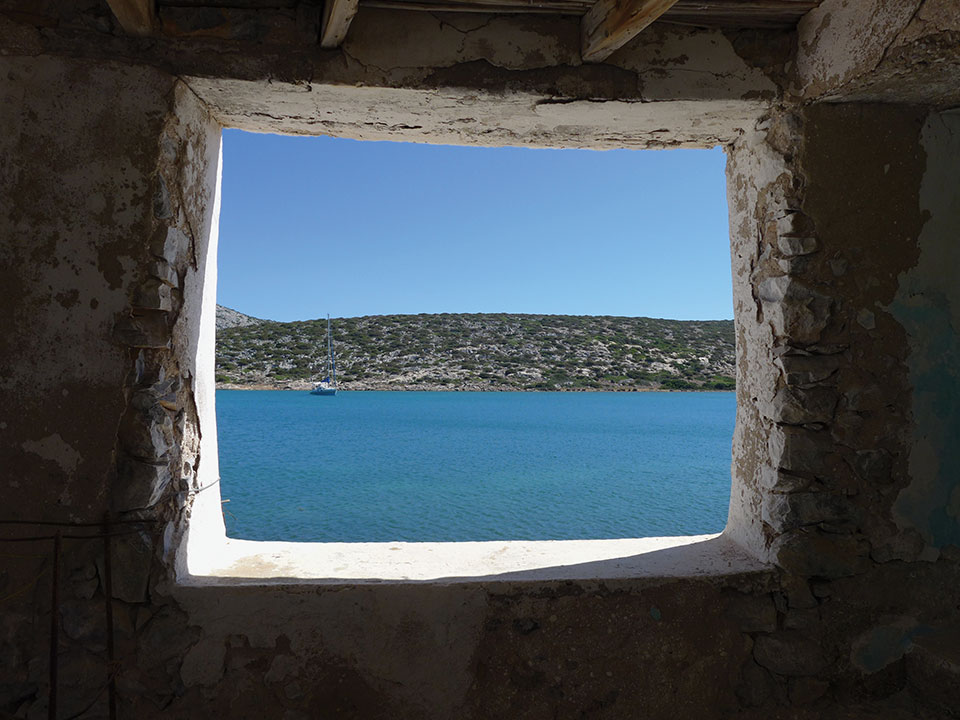
Kefala: What do authors write about if not life, death, and the long and short journeys between them? These are essentially the themes of world literature, and every writer, as Cavafy and Borges would put it, brings to art, if the stars are favorable, an interesting variation. Debut books can often be read as aesthetic manifestos, hidden maps that throw light on the poet’s concept of the creative process. Retrospectively, I think that my first poetry book, Mními kai parallayés (Memory and variations), serves this role. By reproducing the structure of ancient drama (the poems are arranged according to the quantitative parts of tragedy as defined by Aristotle, and many of the titles allude to the terminology of ancient Greek drama), it understands literature as a single text with variations. In ancient Greek, the verb “to read” means to know again, recognize, which agrees with Plato’s definition of knowledge as memory. Memory and variation are two concepts that pervade the book, giving the impression of a composition on the move.
Writing in Greek is an act of resistance. It may be so. But it is also an act of oblivion.
For the late Argentine writer Ricardo Piglia, in the river Liffey converged all past, present, and future documents of civilization. The writer borrows his metaphor from Borges, who considers the Ganges a global, divine river. “Whoever goes down to a river,” Borges wrote in the poem “Happiness,” “goes down to the Ganges.” Similar imagery is used by his translator, Dimítris Kalokíris. Greekness, the latter observes, “can be nothing but the Greek (linguistic and historical) version of a worldwide navigation. . . . Everybody converges in an earthly or celestial river.” We could think of world literature as the rivers Ganges or Liffey, fed by countless individual streams, including the creek we call Greek tradition. The river and its streams are in mutual dependence. A stream that is cut off from its source sooner or later dries up, affecting the flow of the river. Somehow we need to keep the Ganges flowing, while making sure we are not swept by its global current.
My academic readings have obviously influenced my poetry, although not always in a conscious way. We’re what we read, aren’t we? It is true that poetry is of a bastard lineage and that the history of literature is one of betrayal. Poets are treacherous beings; they are unfaithful to what they love most. They are doomed to show their affection through disloyalty, which is essential to the creative process. The calligrams of “chiaroscuro” and “claidheamh mòr” that you mention have less to do with Apollinaire and more with Latin American poets like Vicente Huidobro and Oliverio Girondo. I always found that a lot of what we clumsily call “postmodern” poetry could be traced in the historical avant-garde and experimental modernism of the early twentieth century. Chronorraphía toys with this idea. What Huidobro does in his magnum opus Altazor (1931) is deconstruct Spanish. In the final canto, meaning becomes entirely contextual, and language is decomposed to such an extent that all we are left with is a handful of vowels.
Poets are treacherous beings; they are unfaithful to what they love most.
Chronorraphía, on the other hand, focuses on contextual meaning in a self-defeating attempt to stitch together the multiple layerings and digressions of language and time. Instead of deconstructing the former, it weaves various threads between different poems to amplify its hermeneutic scope. As we leap from one poem to another, shifting between temporal, spatial, and semantic spheres, language and meaning become increasingly fluid and susceptible to change. What we’ve just read is altered because the linguistic, cultural, and historical contexts have changed. This is spelled out in the single-line poem “kumeno”: “a river flowing on the borders of language.” A misspelling of the word “text” (keimeno > keimai = to lie or be in a place), kumeno is a new term that contains the noun “wave” (kuma). As keimeno transforms into kumeno, the text fluctuates and meaning turns porous, while language—a necessary error as we may conclude following half a century of poststructuralist meanderings—can still wear its vowels and consonants relatively tightly. Chronorraphía is a tribute to the historical avant-garde but also, hopefully, a way out of the deconstructionist impasse and the modernist cult of fragmentation.
Goldwyn: Chronorraphía is dedicated to “those playing hopscotch in the gaps of history,” and another influence I see from the modernists is the fragmented view of time and poetics in your work. And indeed the volume does hopscotch like this: from Miguel de Cervantes—whom you call “the inventive hidalgo from Alcalá de Henares”—watching the Ottoman fleet sail into view during the battle of Lepanto (Oct. 7, 1571) to the assassination of the Scottish cardinal David Beaton (May 29, 1546) to the conquest of Constantinople by the Ottomans in 1453, the conquest of Tenochtitlan following the Spanish conquest of the Aztecs in 1521, and more modern examples from World War II and the Holocaust. Could you talk about how these widely disparate and seemingly unrelated moments fit into your vision of history and/or poetry?
Kefala: Chronorraphía is primarily a book about time. We’ve seen that, for Heraclitus, time is a child playing at draughts. Calderón likens life to a theater stage where we are all invited to play a role. Hindus see the universe as the body of Shiva and identify his dance with the uninterrupted cycle of life and death. Einstein argues that the distinction between past, present, and future is but a stubbornly persistent illusion, while Borges imagines time as a river that sweeps us, suggesting that we are the river. Perhaps history is nothing more than the presence on stage of countless voices—some more powerful than others—that coexist in a perpetual, circular present.
Chronorraphía is an exercise in the multiple dimensions of time and an homage to the feeble voices of history. It is an experimental book that follows the journey of an anonymous and illiterate man growing up and living in Cyprus under British colonial rule in the first half of the twentieth century. The eve of World War II finds him in Italian waters aboard the Greek steamship Andros, en route to Marseille and eventually Britain. Along the way he encounters legendary historical and cultural figures including Columbus, Moctezuma, John Knox, Cervantes, Rembrandt, Odysseus, Joyce, and Kafka. Paratextually, he meets Elefthérios Venizélos, the former and future Greek prime minister who lands on the coast of Faliro on January 4, 1924, as he returns from his self-exile in France. The steamer that transports him from Marseille is Andros. On the same day, in 1493, Columbus boarded La Niña to return to Spain after his first trip to the West Indies. Likewise, in 1571 Cervantes fought at Lepanto with the Holy League, which was formed by Pope Pius V to counter the Ottoman siege of Famagusta. The Cypriot city is the meeting point of the great Spanish author and the illiterate man of the memoirs who departs from the port of Famagusta in August 1939. Borges insists that “what we call chance is our ignorance of the complex mechanisms of causality.” Chronorraphía works with this assumption. Everything we do is somehow connected to the past and future, both conceived as a timeless present.
It is often tempting to deduce that in history, as in nature, the most common shape is the sphere. This is how ancient civilizations understood time. Alternatively, we could think beyond the binary cyclical/linear and argue that history can proceed linearly and cyclically, it can spiral and fork at any time. This is how time and meaning unfold in Chronorraphía. Fragments of time are brought together to make sense out of what seems to be chaotic and senseless. Isn’t this one of the primary functions of poetry? If historical time is not linear but fragmented, as Benjamin has taught us, perhaps we’d be better off stitching it. Chronorraphía mirrors the mechanisms of time and poetry, which, by operating metaphorically, abhors linearity. The idea of synchronicity and that of historical symmetries and discontinuities, the architecture of memory and the construction of the narrative are some of the issues explored here. Literature emerges as a study in memory, writing as a time stitch, and the poem as a palliative of time, a time killer (as in “painkiller”), so to speak. Poetry may be a way to outstrip the tyranny of time.
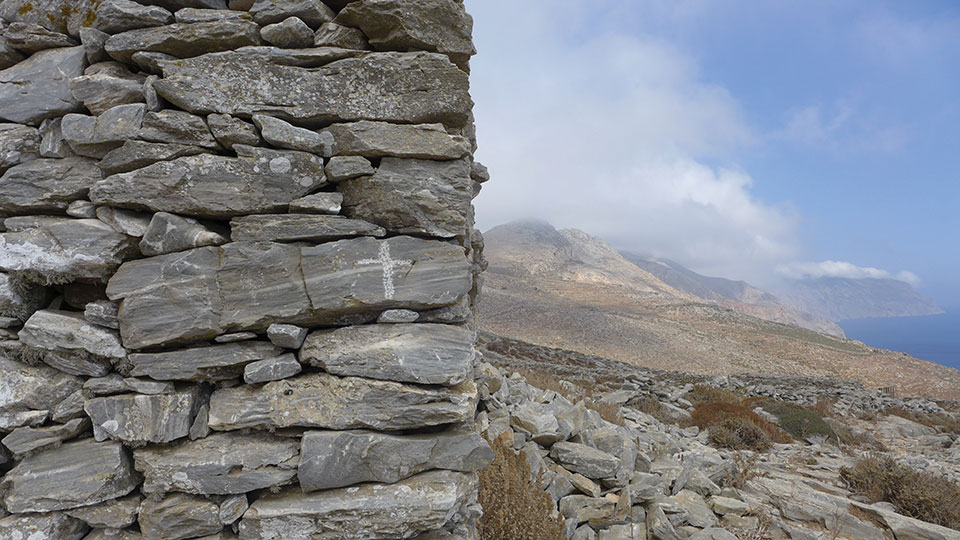
Poetry is an elusive concept and yet it is everywhere. We come across it in our dreams and nightmares, in the ordinary and extraordinary moments of our life.
Goldwyn: The poem included here is “Nausis,” which will appear along with a second poem under the common title “Vrachographíes” (Rock-writings) in the Athens literary magazine Poietiké (Poetics). I think this poem shares many themes with Chronorraphía: meditations on time, history, war, and trauma. The energy in this poem comes from the contrast between the ancient names painted on the rocks—classical Greek names on one hand, modern Arabic names on the other. What can poetry tell us about our own moment, about experiencing, observing, and learning about contemporary or historical trauma?
Kefala: Poetry is our collective conscience and a reliable, if often unpleasant, mirror of reality. I don’t mean that it imitates the world out there but instead presents us with aspects of it that sometimes, for a range of reasons, remain out of our scope of visibility. The recent financial and refugee crises have produced an admirable corpus of poetry in Greece. There are different ways to address such major issues and an indignant discourse is one of them, although not always effective, especially when it becomes mannerism or trend, as if crisis itself is commoditized. Poetry should meditate on reality. It needs time to process, digest, think, and question. There is no point in recording or reporting on reality; we can leave this to journalists, historians, political scientists, economists, activists, and other specialists. My understanding is that poetry should not tell but show. It should offer us cognitive maps of reality, making it navigable without turning it one-dimensional. I’m not saying that a reflexive reaction to what is happening around us is necessarily monolithic or superfluous (the opposite is true), but poetry should be able to go beyond the surface and capture the moment in all its depth and complexity, if it were to put it in historical perspective. Isn’t this why we keep reading the poets of the past? Poetry is the deep eye of humanity. Like a great host, it manages to accommodate the moment in that eternal present we call the grand scale of history.
“Nausis” is a poem I wrote after visiting the island of Folegandros in the Cyclades. The title is a rare female name found on the inner walls of Chrisospiliá (golden grotto), one of the largest caves in Greece. The name contains the noun naus, meaning “ship”: Nausis, or the one who has navigated the sea by ship. In antiquity, young boys and girls apparently crossed the Aegean Sea to partake in the initiation rituals that took place in the cave. Surely some of them must have drowned on the way, but those whose names appear on the cave walls made at least the first leg of the trip. In recent years, the refugee girls and boys whose names reached us through the headlines of newspapers and TV channels were not able to complete their journey to adulthood. In an ironic twist of history, they unknowingly came to stand for those anonymous kids of antiquity, lost in the sea, abandoned and forever forgotten. Tragically, the marble figurines of Cycladic art, with their arms folded across the stomach, have revived in the drowned bodies of the refugee toddlers and teens found on the shores of the Aegean. Are these short-sailing names already the ancient and forgotten kids of tomorrow? Has the drowning of thousands of migrants and refugees in the Mediterranean become a historical trauma, and if not, why? Poetry can pose these questions, but it is we, as a society, that need to come up with some meaningful answers.
August 2017

